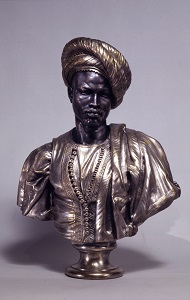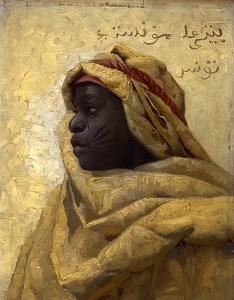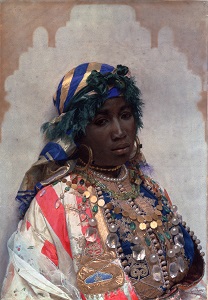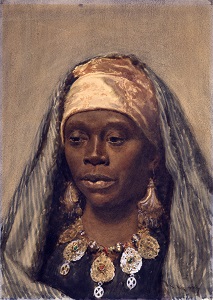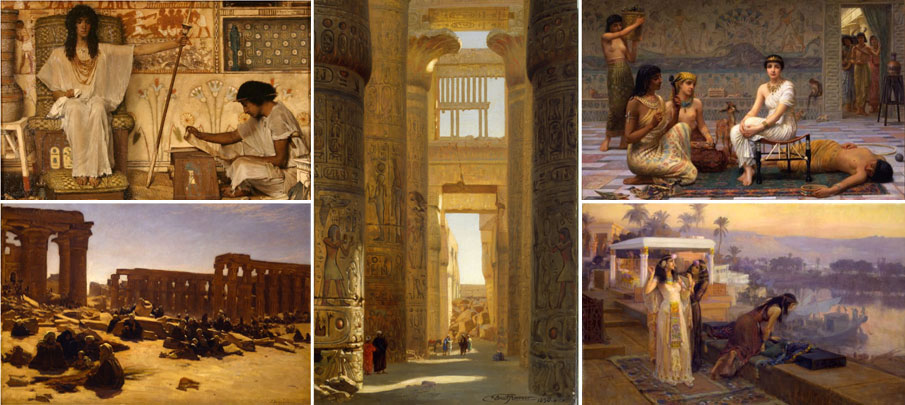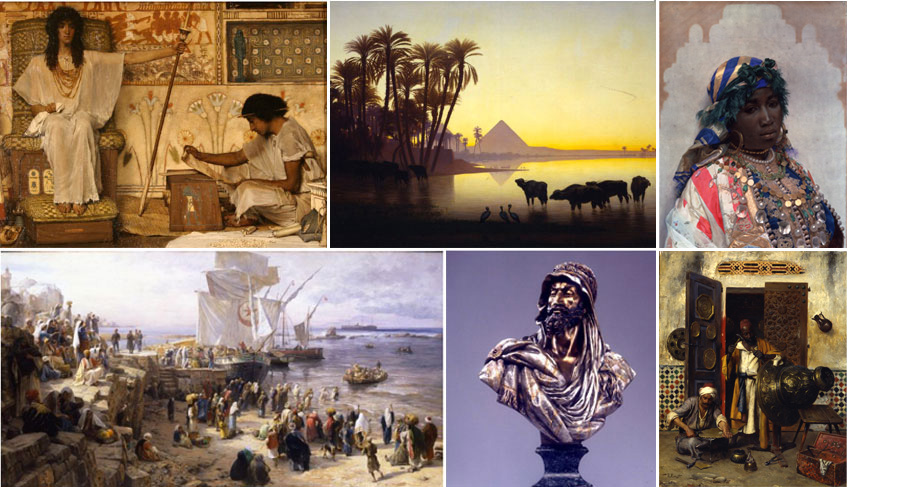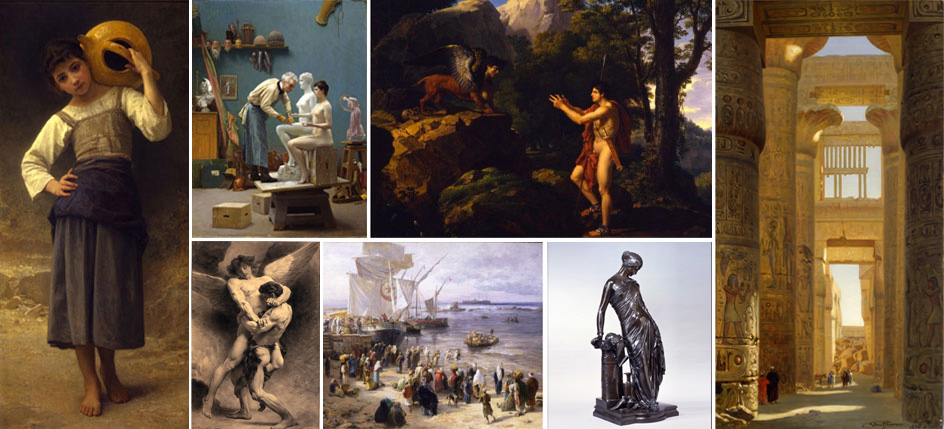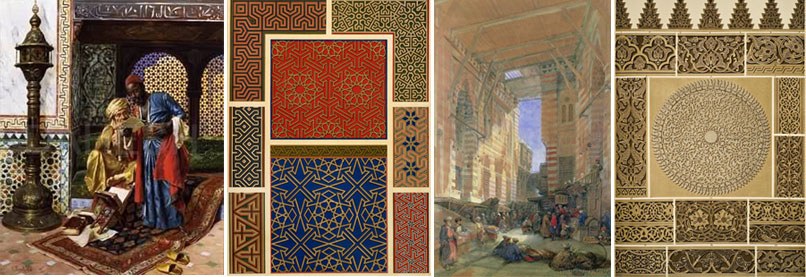- About
- Visit
- Exhibitions
- Collection
- Overview
- Search the Collection
- Recent Acquisitions
- SPOTLIGHT ON …
- Bouguereau’s “Amiable” Pictures Cross the Atlantic
- Back to Work
- The Allure of Animals in Academic Art
- Classical Mythology in 19th-century French Art
- Celebrities: Portrait medals in 19th-Century France
- Oriental “Native Types” from the Dahesh Collection
- Recording Islamic Architecture and Design
- French Natural Selections
- Painting Piety from the Dahesh Collection
- About Face: Learning to Draw Emotion through Expressive Heads
- From St. Petersburg to Paris: The Education of Russian Artists in France
- Picturing the News: The Birth of the Illustrated Press
- Egyptomania: 19th Century Depictions of Ancient Egypt
- The Franco-Prussian War and Its Aftermath in French Art
- Painting Pompeii: From Neoclassicism to the Néo-Grecs
- The Spanish Orient and Henri Regnault (French, 1843–1871)
- Women Artists Who Dared II: Jeanne Thil (French, 1887–1968) and Marie Hadad (Lebanese, 1889–1973)
- Women Artists Who Dared I: Rosa Bonheur (French, 1822–1899) and Elizabeth Gardner Bouguereau (American, 1837–1922)
- Peder Mork Mønsted’s (Danish, 1859–1941) Poetic Views of Nature
- Publications
- Programs
- Shop
- News
Search Results for: ‘tapiro’
-
José Tapiró Y Baró, A Tangerian Beauty
José Tapiró Y Baró (Spanish, 1836–1913)
A Tangerian Beauty, ca. 1891
Watercolor on paper, 26 x 18 1/2 in.
Signed and inscribed lower right: Tapiró Tanger
1995.117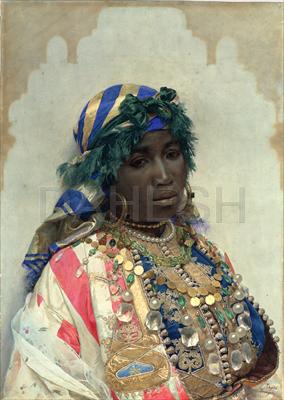
A Tangerian Beauty is a splendid example of Tapiro Baró’s North African ethnographic types that showcase the artist’s skill and remarkable attention to detail. In this vivid watercolor, the silken gleam of the headscarf, colorful feathers, the glint of gold, glow of pearls, elaborate costume, and the careful study of a particular physiognomy contribute to the remarkable immediacy of the image. The frame is original to this work, and apart from several decorative motifs, contains the number 1309, which probably refers to the Muslim Hijri calendar, which started counting in 622 AD to commemorate the Prophet Muhammad’s migration from Mecca to Medina. If converted to the Gregorian calendar, the year would be about 1891 AD.
After studying at the École des Beaux Arts in Barcelona, Tapiro Baró went to Rome where he spent many years, and began his career painting historical and genre subjects. Influenced by his compatriot and close friend Mariano Fortuny y Marsal — the preeminent Spanish Orientalist and watercolorist of the 19th century — Baró developed a taste for Orientalist subject matter. The two artists visited Morocco together in 1860, and again in 1871. By 1876, Baró settled in Tangiers, the Moroccan port city just across the narrow Strait of Gibraltar. His varied works of Moroccan genre scenes, portraits, and ethnographic types — inspired by Fortuny and contemporary Italian genre painters — became commercially successful especially in England and America. Baró participated in both the 1889 and 1900 Exposition Universelles where he received silver medals.
-
Oriental Native Types from the Dahesh Collection
“[A]rt runs forward in all directions on wings of steam; new lands, unexplored climates, unfamiliar human types, original races offer themselves to art from every angle,” wrote Théophile Gautier in 1857 in the journal L’Artiste. Western interest in classifying human “types” according to their facial physiognomies and distinctive costumes goes back to the 16th century, but by the second half of the 19th century the portrayal of ethnic groups was a prolific theme in Orientalist art. Improved and newly invented forms of transportation made the Orient (present-day Turkey, the Middle East, and North Africa) more accessible, prompting a flood of artists to head for that region and produce realistic representations of its diverse populations. The new discipline of ethnography, as well as the display of different foreign peoples in Universal exhibitions in the various European cities, was crucial in fueling the popularity of such images.
Charles Cordier (1827–1905) was among the most famous 19th-century French ethnographic sculptors. A pupil of François Rude (1784–1855), Cordier devoted his career to portraying diverse human races. From 1851 to 1866 he created a series of busts for the Paris Museum of Natural History’s new ethnographic gallery as its official ethnographic sculptor. He received a number of government grants for missions in Algeria (1856), Greece (1858), and Egypt (1866) to study and reproduce in sculpture “the different indigenous types of the human race.” But aside from documenting racial differences, Cordier’s main goal was to “present the race as it is in its own beauty, absolutely true to life, with its passion, its fatalism, in its quiet pride and conceit.” A Sudanese in Algerian Costume is one of Cordier’s most successful works exemplifying this approach. The Dahesh sculpture is a reduced version of the silvered bronze and onyx sculpture that was exhibited at the Paris Salon of 1857 and purchased by Emperor Napoleon III (Musée d’Orsay, Paris).
Interest in ethnography continued into the late 19th century. Like Cordier, numerous artists rendered careful studies of physiognomy and costume, while capturing the essence and expression of the individuals. An example is Peder Mønsted’s (1859–1941) sensitive portrait of a cloaked Nubian—the Nubians live in southern Egypt and present-day Northern Sudan—conveying a sense of strength and dignity. Best known for his Nordic landscapes, Mønsted trained at the Royal Academy of Fine Arts in Copenhagen, Denmark from 1875 to 1879 and later traveled extensively throughout Europe, North Africa, and the Middle East. In 1876 José Tapiró y Baró (1836–1913), the first painter from Spain to settle in Tangier—in northern Morocco across the Strait of Gibraltar—produced numerous watercolors of indigenous North Africans. An iconic example is A Tangerian Beauty, painted around 1891, in which the artist captures the sitter’s likeness and expression, and emphasizes the vibrant colors and textures of her costume and accessories—echoing the work of his childhood friend and celebrated Spanish artist Mariano Fortuny y Marsal (1838–1874). A further typical work is Head of a North African Woman by another colleague of Fortuny, Nazzareno Cipriani (1843–1925). While the Italian artist specialized in Venetian scenes, he likely turned to this theme because of the high demand for these images in contemporary Rome. The careful study of physiognomy, close attention to costume, and focus on personal characteristics align this watercolor with the ethnographic work of Cordier, Mønsted, and Tapiró. The woman’s somber contemplative expression as well as her striking clothes and jewelry are all superbly captured by Cipriani, lending the image an extraordinary immediacy.
-
Dahesh Museum of Art in Partnership with Christie’s
New York Opens Orientalist Exhibition in Rockefeller Center
Encountering the Orient: Masterworks from the Dahesh Museum of Art
Through April 15, 2013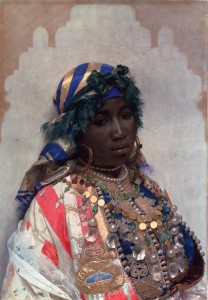 New York, New York — The Dahesh Museum of Art and Christie’s New York today announced a first-time partnership, an exhibition of 30 major Orientalist works from the Museum’s collection, plus related programs. Encountering the Orient: Masterworks from the Dahesh Museum of Art, opens to the public at Christie’s in New York City, 20 Rockefeller Plaza, on March 27 and remains on view until April 15, 2013. The exhibition celebrates the 19th-century rediscovery of the East by Western artists, and offers a fresh approach to Orientalism as a complex, highly contextual, cross-cultural encounter.
New York, New York — The Dahesh Museum of Art and Christie’s New York today announced a first-time partnership, an exhibition of 30 major Orientalist works from the Museum’s collection, plus related programs. Encountering the Orient: Masterworks from the Dahesh Museum of Art, opens to the public at Christie’s in New York City, 20 Rockefeller Plaza, on March 27 and remains on view until April 15, 2013. The exhibition celebrates the 19th-century rediscovery of the East by Western artists, and offers a fresh approach to Orientalism as a complex, highly contextual, cross-cultural encounter.This is the first time the young Museum is partnering with an auction house to present an exhibition. Their mutual goal is to provide loyal constituencies and new audiences of museumgoers, collectors, specialists and scholars with a fresh, more nuanced view of Orientalism, based on recent scholarship that re-frames the 19th-century encounter between East and West.
According to Alia Nour, Associate Curator at the Dahesh Museum of Art, who developed Encountering the Orient, “There are three main reasons for organizing this exhibition now, all of them timely. First, since the countries of North Africa and the Middle East are in the news daily, our mental map of the world is being re-drawn to include people and cultures in the region once known as ‘the Orient.’ Second, the Orient still has a powerful hold on the imaginative life of the West, as marked by the recent proliferation of exhibitions devoted to Egyptomania, the influence of Ancient Egypt, real and imagined, on popular culture. Finally, the field of 19th-century art history is growing. Young scholars are producing exciting inter-disciplinary research — revising old theories, breaking new ground. Thus, it seemed timely to re-examine Orientalism with a choice selection of Orientalist masterpieces from the Dahesh Museum’s Collection in collaboration with an institution that celebrates the art of 19th century, like Christie’s.”
According to Alexandra McMorrow, International Department Head, 19th–Century European Art, “Christie’s is thrilled to collaborate on this significant and timely exhibition. As an auction house, we are committed to not only connoisseurship but to scholarship as well. This exhibition is the perfect example of how our two different institutions can work together to contribute to a fuller understanding of 19th-century art and specifically Orientalism.”
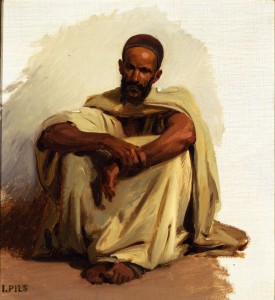 Encountering the Orient explores how artists from both Europe and America interpreted the culture and people of the Middle East and North Africa during the 19th century. Although fascination with the Orient began earlier, in the 19th century, Western encounters flourished following the industrial revolution, increased political interest, and new means of transportation. Enchanted by the exotic, romantic artists wanted to escape the urban rigors back home, realists sought to record the “real” Orient, and others looked for unusual subject matter to satisfy the new demands of a changing art market. Yet some who did not make the journey rendered an “imaginary” Orient inspired by both Arabic texts — such as One Thousand and One Nights –and many popular Western literary and travel accounts. After 1839, photographers provided plentiful documentation.
Encountering the Orient explores how artists from both Europe and America interpreted the culture and people of the Middle East and North Africa during the 19th century. Although fascination with the Orient began earlier, in the 19th century, Western encounters flourished following the industrial revolution, increased political interest, and new means of transportation. Enchanted by the exotic, romantic artists wanted to escape the urban rigors back home, realists sought to record the “real” Orient, and others looked for unusual subject matter to satisfy the new demands of a changing art market. Yet some who did not make the journey rendered an “imaginary” Orient inspired by both Arabic texts — such as One Thousand and One Nights –and many popular Western literary and travel accounts. After 1839, photographers provided plentiful documentation.Drawn from the Dahesh Museum of Art’s collection, the exhibition features 30 paintings, sculptures, and illustrated books by well-known artists, such as Rudolf Ernst, Ludwig Deutsch, Gustav Bauernfeind and Frederick Arthur Bridgman, as well as evocative works by less familiar names, such as José Tapiró y Baró. It addresses a broad variety of themes, ranging from Western fascination with ancient Egypt, Islamic architecture and design, ethnography, and biblical history to the exotic genre and harem scenes, and provides a fuller understanding of Orientalism and the artists who practiced it.
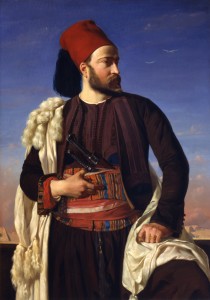 The Dahesh Museum of Art burst on the New York City museum scene in 1995, some 18 years ago, and is best known for its thoughtful, engaging exhibition program that champions 19th-century academic art, drawing on contemporary scholarship. The Museum’s rich holdings in Orientalist art (paintings, sculpture, and works on paper) are among the most frequently requested loans the Museum makes to arts institutions internationally and in the United States. Although it recently purchased a large office space in Hudson Square, where it offers Salon Thursdays, a series of free art historical lectures focused on the 19th century, it currently has no exhibition space of its own. Undaunted by this challenge, the Dahesh creatively forms partnerships with a variety of arts institutions to make sure the collection, along with curatorial insights, are shared with a diverse public. Most recently, Dahesh exhibitions traveled to the Bellarmine Museum of Art, Fairfield, Connecticut; the Munson-Williams Proctor Arts Institute, Utica, NY; the Frederick R. Weisman Museum of Art, Pepperdine University, Malibu, California; Lubin House Gallery, Syracuse University, New York City; and the Gallery of Light, Dubai, UAE. In April 2013, the Dahesh will lend five major Orientalist works to the Yale Peabody Museum of Natural History, New Haven, CT, for their exhibition, Echoes of Egypt: Conjuring the Land of the Pharaohs.
The Dahesh Museum of Art burst on the New York City museum scene in 1995, some 18 years ago, and is best known for its thoughtful, engaging exhibition program that champions 19th-century academic art, drawing on contemporary scholarship. The Museum’s rich holdings in Orientalist art (paintings, sculpture, and works on paper) are among the most frequently requested loans the Museum makes to arts institutions internationally and in the United States. Although it recently purchased a large office space in Hudson Square, where it offers Salon Thursdays, a series of free art historical lectures focused on the 19th century, it currently has no exhibition space of its own. Undaunted by this challenge, the Dahesh creatively forms partnerships with a variety of arts institutions to make sure the collection, along with curatorial insights, are shared with a diverse public. Most recently, Dahesh exhibitions traveled to the Bellarmine Museum of Art, Fairfield, Connecticut; the Munson-Williams Proctor Arts Institute, Utica, NY; the Frederick R. Weisman Museum of Art, Pepperdine University, Malibu, California; Lubin House Gallery, Syracuse University, New York City; and the Gallery of Light, Dubai, UAE. In April 2013, the Dahesh will lend five major Orientalist works to the Yale Peabody Museum of Natural History, New Haven, CT, for their exhibition, Echoes of Egypt: Conjuring the Land of the Pharaohs. -
Artwork of the Month
February 2013
José Tapiró y Baró, Spanish, 1830-1913
A Tangerian Beauty
Watercolor on paper, 26 x 18 ½ in.
Signed and inscribed lower right: Tapiró/Tanger
1995.117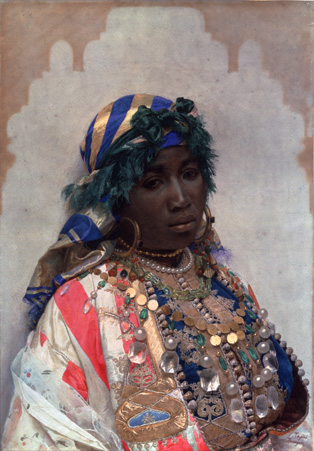
A Tangerian Beauty is a splendid example of Tapiro Baró’s North African ethnographic types that showcase the artist’s skill and remarkable attention to detail. In this vivid watercolor, the silken gleam of the headscarf, colorful feathers, the glint of gold, glow of pearls, elaborate costume, and the careful study of a particular physiognomy contribute to the remarkable immediacy of the image. The frame is original to this work, and apart from several decorative motifs, contains the number 1309, which probably refers to the Muslim Hijri calendar, which started counting in 622 AD to commemorate the Prophet Muhammad’s migration from Mecca to Medina. If converted to the Gregorian calendar, the year would be about 1891 AD.
After studying at the École des Beaux Arts in Barcelona, Tapiro Baró went to Rome where he spent many years, and began his career painting historical and genre subjects. Influenced by his compatriot and close friend Mariano Fortuny y Marsal — the preeminent Spanish Orientalist and watercolorist of the 19th century — Baró developed a taste for Orientalist subject matter. The two artists visited Morocco together in 1860, and again in 1871. By 1876, Baró settled in Tangiers, the Moroccan port city just across the narrow Strait of Gibraltar. His varied works of Moroccan genre scenes, portraits, and ethnographic types — inspired by Fortuny and contemporary Italian genre painters — became commercially successful especially in England and America. Baró participated in both the 1889 and 1900 Exposition Universelles where he received silver medals.
-
Exhibitions to Lend
The Dahesh Museum of Art has a rich tradition of organizing exhibitions centered on its extensive permanent collection of 19th-century academic art. The curatorial staff has developed a series of exhibitions on subjects that are especially representative of the artists, ideals, and subject matter that dominated academic art during that creative era. The exhibitions listed here range from modestly scaled to substantial and major. In all cases, the exhibition checklist can be tailored to the needs and spaces of the borrowing institution.
For further information, including proposed checklists, estimated figures for transportation and insurance, fees, and scheduling, please contact:
J. David Farmer
Director of Exhibitions
Dahesh Museum of Art
dfarmer@daheshmuseum.org
207-354-6120 or (cell) 207-593-2886Rediscovering Egypt
The Dahesh Museum Of Art CollectionNapoleon’s invasion of Egypt in 1798, accompanied by scholars, artists, and archaeologists initiated the 19th-century rediscovery of this extraordinary country. Writers, curious travelers, and, most crucially, artists from many European countries followed and explored all aspects of its ancient and contemporary culture. Rediscovering Egypt surveys the Orientalist artist’s role in Egypt from the collection of the Dahesh Museum of Art, the only institution in America devoted exclusively to collecting and exhibiting 19th-century European academic art.
The Dahesh Museum of Art is pleased to make Rediscovering Egypt available, selected from one of the finest collections of Orientalist art in America.
Highlights:
- Selections from Description de l’Égypte, the scholarly product of Napoleon’s brief tenure in Egypt
- Historic recreations by Alma-Tadema, Long and Bridgman
- Evocative land- and city-scapes by Girardet, Frère, and Varley, plus images of ancient Egyptian ruins by Farquharson and Koerner
- Genre scenes by such masters as Girardet, Ernst, and Weeks
- Romantic narratives by Corrodi and Gentz
- A selection of Carter color lithographs and Gérôme photogravures
The Orient Real And Imagined
The Dahesh Museum Of Art CollectionThe rediscovery in the late 18th and 19th centuries of the Middle East, Egypt, and Ottoman Turkey — then called the Orient — and its representaiton in art and literature has come to be known as Orientalism. The Orient Real and Imagined is a survey of Orientalist art in all mediums and techniques from the collection of the Dahesh Museum of Art — the only institution in America devoted exclusively to collecting and exhibiting 19th-century academic art — and provides early representations of Ottoman courtiers, romantic but accurate images of the Holy Land, scenes of everyday life, archaeologically correct studies, historic recreations and, finally and ironically, representations catering to the fantasies and preconceptions of Western viewers.
Highlights:
- Historic recreations by Alma-Tadema, Long, and Bridgman
- Evocative land- and city-scapes by Roberts, Carter, Frère, and Varley, plus images of ancient Egyptian ruins by Farquharson, Koerner, and Gentz
- Gustav Bauernfeind’s masterpiece of contemporary Ottoman domination in Jaffa
- Genre scenes by such masters as Ernst, Deutsch, Girardet, Pavesi, and Weeks
- Ethnographic studies by Tapiró Baró, Fromentin, Mønsted, Cordier, and Marcello
- Romantic narrative scenes by Schreyer, Corrodi, and Vernet
- Rare ethnographic prints from the 18th-century Ottoman Court
- A selection of Gérôme photogravures
Masterworks
Selections From The Dahesh Museum Of Art CollectionThe Dahesh Museum of Art is the only institution in the United States of America devoted to collecting and exhibiting European academic art of the 19th century. Masterworks features drawings, paintings, and sculptures by creative artists trained in the academies and private ateliers of France and other countries, including Jean-Léon Gérôme, William Adolphe Bouguereau, Alfred Lord Leighton, Lawrence Alma Tadema, Jean-Jacques Pradier, and Léon Bonnat, as well as by lesser known but superbly talented contemporaries. Historical and Orientalist subjects — the two dominant themes — are complemented by portraits, landscapes, and still lifes.
Masterworks is a major, high profile exhibition that can be shaped to the scale and special interests of the borrowing museum.
Highlights:
- Selected drawings from academic studies to finished works
- Cabanel’s monumental envoi as a student at the French Academy in Rome
- Salon works from Bouguereau, Gérôme, and Fabre
- Major Orientalist paintings and sculptures by European travelers to the Middle East
- Paintings by renowned Victorians
- Neo-Classical to Realist landscapes
Reconnecting East And West
Islamic Ornament In 19th-century Works From The Dahesh Museum Of ArtThe exhibition and publication trace the remarkably rich documentation of Islamic ornament and design by European scholars, artists, and architects who traveled to the Middle East, North Africa, and Turkey in the 19th century, following the “rediscovery” of the region (which Westerners called the Orient) in the years after 1800. Reconnecting East & West was initially shown in Dubai to strong critical acclaim and includes paintings, prints, and several of the most beautifully printed books published in the 19th century.
Highlights:
- Genre paintings by Rudolph Ernst and Ludwig Deutsch that showcase Islamic architecture and design
- Prints from the Description de l’Égypte and urban views commissioned by Owen Browne Carter
- Owen Jones’s groundbreaking Grammar of Ornament and Alhambra, as well as Émile Prisse d’Avenne’s sumptuous L’Art arabe.
The Essential Line
Drawings From The Dahesh Museum Of ArtThe Essential Line celebrates the act of drawing in the 19th century with a selection of the finest works from the collection of the Dahesh Museum of Art, including exceptional examples of the entire range of drawing techniques and subjects: student work, plein-air sketches, studies for paintings, and finished works of art.
A checklist of available drawings and selected images are available on request. The exhibition can be tailored for each museum’s individual needs and spaces.
-
Collaborations
The Dahesh Museum of Art has been committed to sharing its collection. Each year it lends works of art from its permanent collection to other museums and cultural institutions around the country and the world. These loans, along with collaborative exhibitions, enable the Museum to engage new audiences and promote a lively discussion of art movements and the cultural context that influences how art is understood and appreciated.
Current Collaborations
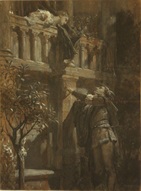
Musei di San Domenico, Forlì (Emilia-Romagna), Italy
Pre-Raphaelites: A Modern Renaissance
February 23 – June 30, 2024 (3 object loan)
Frank Dicksee, Romeo and JulietUpcoming Collaborations
Past Collaborations
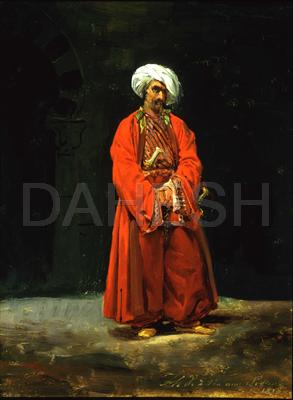
Musée National des châteaux de Versailles in Versailles, France
Horace Vernet (1789–1863)
Nov. 14, 2023 – March 17, 2024 (2 object loan)
Émile-Jean-Horace Vernet’s A Man in Oriental Costume and Sketch for The Lion Hunt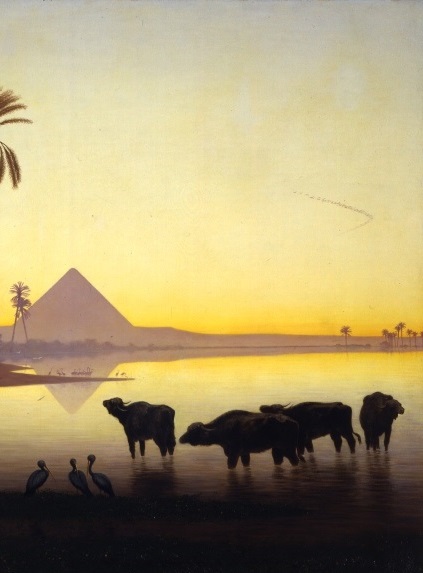
Denver Art Museum, Denver, CO.
Near East to Far West: Fantasies of French and American Colonialism
March 5, 2023 – May 23, 2023 (3 object loan)
Charles Théodore Frère, Along the Nile at Giza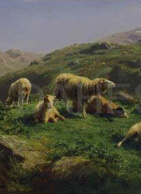
Musée d’Orsay, Paris, France
Rosa Bonheur (1822–1899)
October 18, 2022 – January 15, 2023 (2 object loan)
Rosa Bonheur, Grazing Sheep in the Pyrenees
Musée des Beaux-Arts, Bordeaux, France
Rosa Bonheur (1822–1899)
May 18 – September 18, 2022 (3 object loan)
Rosa Bonheur, Grazing Sheep in the Pyrenees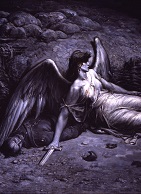
Norman Rockwell Museum, Stockbridge, MA
Enchanted: A History of Fantasy Illustration
June 12 – October 31, 2021
Gustave Doré, The Black Eagle of Prussia, Paul Césaire Gariot Pandora’s Box, and Jules Joseph Lefebvre Diana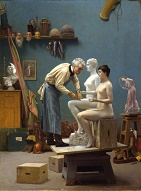
Van Gogh Museum, Amsterdam, Netherlands
In the Picture
February 21 – August 30, 2020
Jean-Léon Gérôme Working in Marble, or The Artist Sculpting Tanagra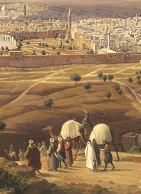
New-York Historical Society, New York, NY
Mark Twain and the Holy Land
October 18, 2019 – February 2, 2020
Hubert Sattler, View of Jerusalem from the Mount of Olives and
Louis Hague, after David Roberts’ Church of the Purification
Kunsthalle München, Munich, Germany
Thrill of Deception – From Ancient Art to Virtual Reality
August 17 – January 13, 2019
Louis Abel-Truchet, Trompe l’oeil of a Painter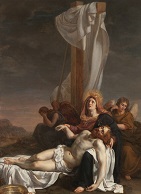
Norman Rockwell Museum, Stockbridge, MA
Keepers of the Flame: Parrish, Wyeth, Rockwell and the Narrative Tradition
June 9 – October 28, 2018 (6 object loan)
Paul Delaroche, Lamentation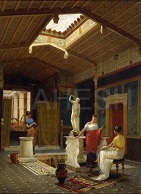
Museo Archeologico Nazionale di Napoli, Naples, Italy
Herculaneum and Pompeii: Visions of a Discovery
June 29 – September 13, 2018
Luigi Bazzani, A Pompeian Interior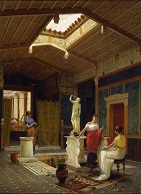
M.A.X. Museo, Chiasso, Switzerland
Herculaneum and Pompeii: Visions of a Discovery
February 25 – May 13, 2018
Luigi Bazzani, A Pompeian Interior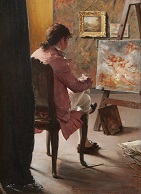
Flagler Museum, Palm Beach, FL
Masterfully Human: The Art of Gaugengigl
January 23 – April 29, 2018
Ignaz-Marcel Gaugengigl, The Painter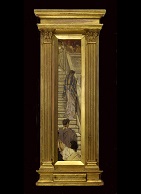
Leighton House Museum, London, United Kingdom
Alma-Tadema: At Home in Antiquity
July 7 – October 29, 2017
Sir Lawrence Alma-Tadema Joseph, Overseer of Pharaoh’s Granaries and The Staircase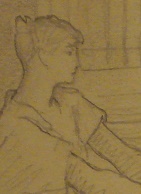
Sterling and Francine Clark Art Institute, Williamstown, MA
Orchestrating Elegance: Alma-Tadema and Design
June 4 – September 4, 2017
Sir Lawrence Alma-Tadema First Concept for A Reading from Homer
Österreichiche Galerie Belvedere, Vienna, Austria
Lawrence Alma-Tadema: Decadence & Antiquity
February 23 – June 18, 2017
Sir Lawrence Alma-Tadema Joseph, Overseer of Pharaoh’s Granaries and The Staircase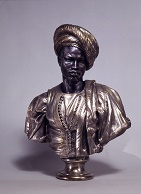
Cornell Fine Arts Museum, Winter Park, FL
The Black Figure in European Imaginary
January 14 – May 14, 2017 (4 object loan)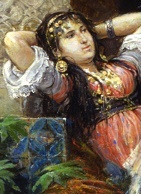
Flagler Museum, Palm Beach, FL
Harem: Unveiling the Mystery of Orientalist Art
January 24 – April 16, 2017 (4 object loan)
Fries Museum, Leeuwarden, Netherlands
Lawrence Alma-Tadema: Classical Charm
October 1, 2016 – February 7, 2017
Sir Lawrence Alma-Tadema Joseph, Overseer of Pharaoh’s Granaries and The Staircase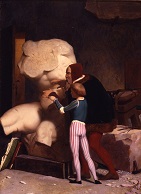
Museo Nazionale Romano di Palazzo Altemps, Rome, Italy
La Forza delle Rovine (The Strength of Ruins)
Oct. 7, 2015 – Jan. 31, 2016
Jean-Léon Gérôme Michelangelo Being Shown the Belvedere Torso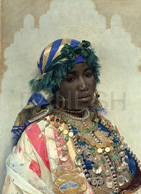
Montreal Museum of Fine Arts, Montreal, Canada
Benjamin-Constant (1845–1902): Marvels and Mirages of Orientalism
Jan. 26 – June 7, 2015
Jean-Joseph Benjamin-Constant Seated Arabs & José Tapiró Baró A Tangerian Beauty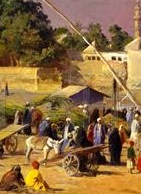
IDEA InterDisciplinary Arts at Colorado College, Colorado Springs, CO
Re-Orientations: Defining and Defying Images of the Arab World
March 25 – May 8, 2015 (9 object loan)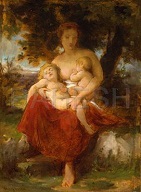
Flagler Museum, Palm Beach, FL
Bouguereau’s ‘Fancies’: Allegorical and Mythological Works by the French Master
Jan. 27 – April 19, 2015
William-Adolphe Bouguereau Study for Charity & Henri Godet The Abduction of Psyche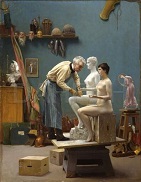
Gagosian Gallery, New York, NY
In the Studio
Feb. 17 – April 18, 2015
Jean-Léon Gérôme Working in Marble, or The Artist Sculpting Tanagra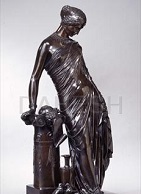
Leslie-Lohman Museum of Gay and Lesbian Art, New York, NY
The Classical Nude and the Making of Queer History
Oct. 18, 2014 – Jan. 4, 2015
Jean-Jacques Pradier Standing Sappho
Musée des Augustins, Toulouse, France
Benjamin-Constant (1845–1902): Marvels and Mirages of Orientalism
Oct. 4, 2014 – Jan. 4, 2015
Jean-Joseph Benjamin-Constant Seated Arabs
National Gallery of Canada, Ottawa, Canada
Gustave Doré (1832–1883): Master of Imagination
June 12 – Sept. 14, 2014
Gustave Doré The Black Eagle of Prussia
National Art Museum of Catalonia, Barcelona, Spain
Josep Tapiró Painter of Tangier
April 16 – Sept. 14, 2014
José Tapiró Baró A Tangerian Beauty
Saint Louis Art Museum, Saint Louis, MO
Impressionist France: Visions of Nation from Le Gray to Monet
February 22 – May 25, 2014
Rosa Bonheur, Grazing Sheep in the PyreneesThe Nelson-Atkins Museum of Art, Kansas City, MO
Impressionist France: Visions of Nation from Le Gray to Monet
October 19, 2013 – January 19, 2014
Rosa Bonheur, Grazing Sheep in the Pyrenees
Musée d’Orsay, Paris, France
Gustave Doré Master of Imagination
Feb. 17 – May 11, 2014
Gustave Doré The Black Eagle of Prussia
Yale Peabody Museum of Natural History, New Haven, CT
Echoes of Egypt: Conjuring the Land of the Pharaohs
April 13, 2013 – Jan.4, 2014 (5 object loan)



